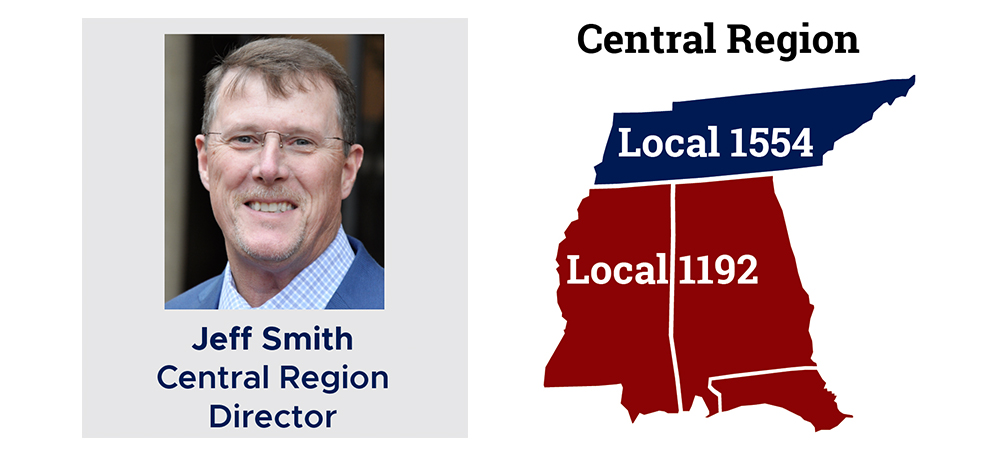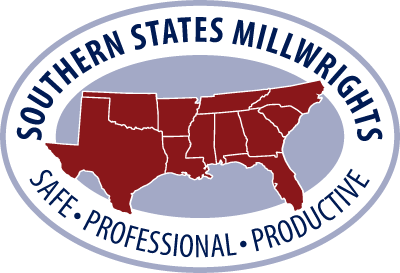
Work opportunities across the region have been excellent, contributing to member and contractor prosperity.
Work has been very consistent for our members and contractors alike throughout the region. Through September 2022, we have worked 1.2 million man-hours, maintaining a consistency within 1% of 2021 man-hours.
We have recruited 85 new millwrights to our roster, bringing our membership to 1,611 members. The Central Region set two-year (2021-2022) goals that included increasing membership and man-hours within the automotive and light-frame conveyor industries.
- In the automotive industry, we wanted to increase man-hours by 100,000, setting a benchmark at 636,858. We have worked more than 1.1 million man-hours and have achieved the goal.
- The light-frame conveyor/distribution goal included increasing man-hours by 40,000, for a benchmark total of 52,174. We are within 82% (43,034.55 man-hours) of meeting this goal.
The Central Region is home to roughly 231 automotive manufacturing and assembly plants and accounts for 41% of automotive manufacturing and assembly plants across the Southern states. With each new year, we continue to grow. Setting goals and finding unique opportunities for growth will always be a collaboration with our partnering contractors.
2023 is looking to be just as busy as 2022 with the new Ford Blue Oval project and other large projects heading our way. We will continue our daily recruitment efforts. Agents have been working hard to grow local memberships by attending job fairs hosted by high schools, colleges, trade schools, and community organizations. Social media and digital recruitment platforms also have led to success.
The Infrastructure Investment and Jobs Act, aka the Bipartisan Infrastructure Law, authorizes $1.2 trillion for transportation and infrastructure spending, with $550 billion of that figure going toward “new” investments and programs.
So far, $2.9 billion in BIL funding has been announced for Alabama. This includes: $2.3 billion for roads, bridges, roadway safety, and other major projects; $61.7 million for power generation and energy efficiency; $39.5 million for airports; $137 million for water infrastructure; and $78.7 million for ports and waterways. In addition, nine airports in the state are getting $11.36 million in Federal Aviation Administration grants. These U.S. Department of Transportation grants are designated for improvements to local airport infrastructure. Airports included are Huntsville International Airport and Birmingham-Shuttlesworth International Airport.
For Tennessee, more than $3.6 billion in BIL funding has been announced. The funding includes: $2.5 billion for roads, bridges, roadway safety, and other major projects; $57 million for power generation and energy efficiency; $64 million for airports; $121 million for water infrastructure; and $15 million for ports and waterways.
BIL funding announced so far for Mississippi totals $2.1 billion. The funding includes: $1.4 billion for roads, bridges, roadway safety, and other major projects; $47.2 million for power generation and energy efficiency; $31 million for airports; $74.9 million for water infrastructure; and $37 million for ports and waterways.
The bipartisan Infrastructure Investment and Jobs Act will grow the economy, enhance our competitiveness, and create good union jobs, allowing us to increase our labor force and market share for our partnering contractors.
